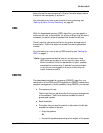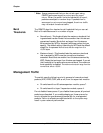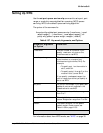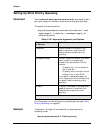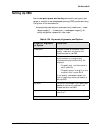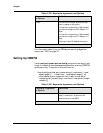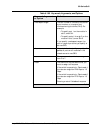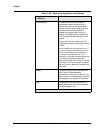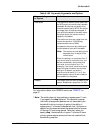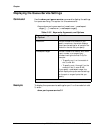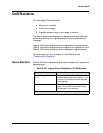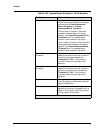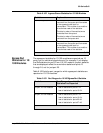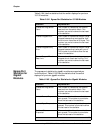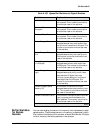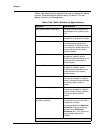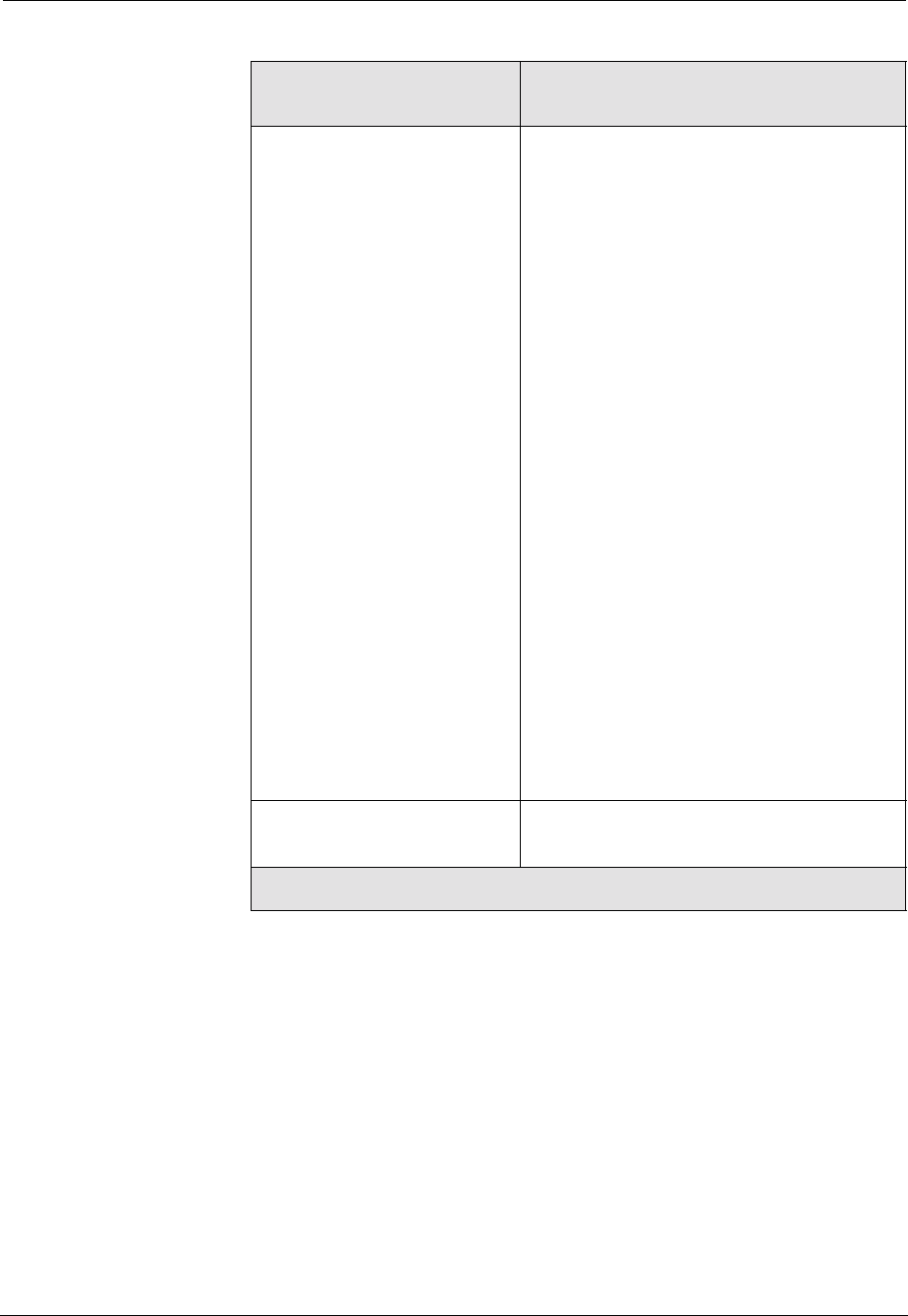
Avaya P550R, P580, P880, and P882 Multiservice Switch User Guide, v5.3.1 -45
80-Series QoS
For information about how CBWFQ works, see “CBWFQ” on
page 37.
* Note: The switch does not drop packets on egress queue 7, even
if you specify the drop keyword. This restriction ensures
that traffic management packets are not discarded by the
bandwidth-limiting functions. In spite of the ability of
egress queue 7 to exceed its bandwidth limit, the queue is
subject to a fairness mechanism that prevents other queues
(6 through 0) from being starved. Note that, when you
specify drop, the bandwidth of queue 7 is limited if lower
priority queues require service and have not reached their
bandwidth guarantee.
<max-burst> The maximum size burst that is serviced
by WFQ once the normal burst has been
exceeded. Bursts that are smaller than
this size are serviced by WFQ. Bursts that
are larger than this size are dropped. If
you set this threshold to the same value
as normal burst, the maximum burst
capability is disabled.
The maximum burst can range from the
normal burst size to 15,000.Avaya
recommends a value of 6000.
Increase the maximum burst setting as
the burstiness of the traffic increases.
Note: The maximum burst setting must
be greater than or equal to the
normal burst.
Enter this setting in a multiple of four. If
you do not enter a multiple of four, the
switch rounds down the number that
you enter to a multiple of four. For
example, if you enter a maximum burst
size of 43 byes, the switch converts the
setting to 40 bytes.If you enter a
maximum burst size of 0,1,2 or 3, the
switch stores a value of 0 and no data is
forwarded from the queue.
<weight> The weight that you want to assign to the
queue. Weights can range from 1to 254.
Table 6-160. Keywords, Arguments, and Options
Keyword, Argument
or Option
Definition
4 of 4



